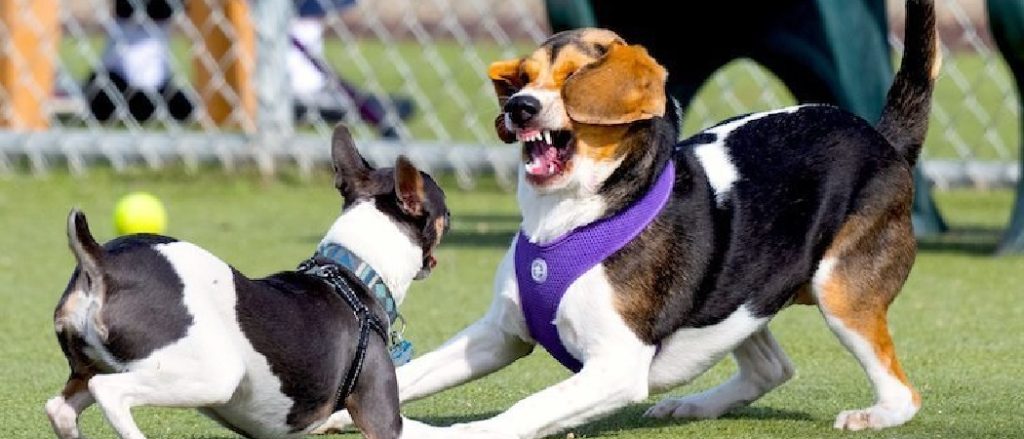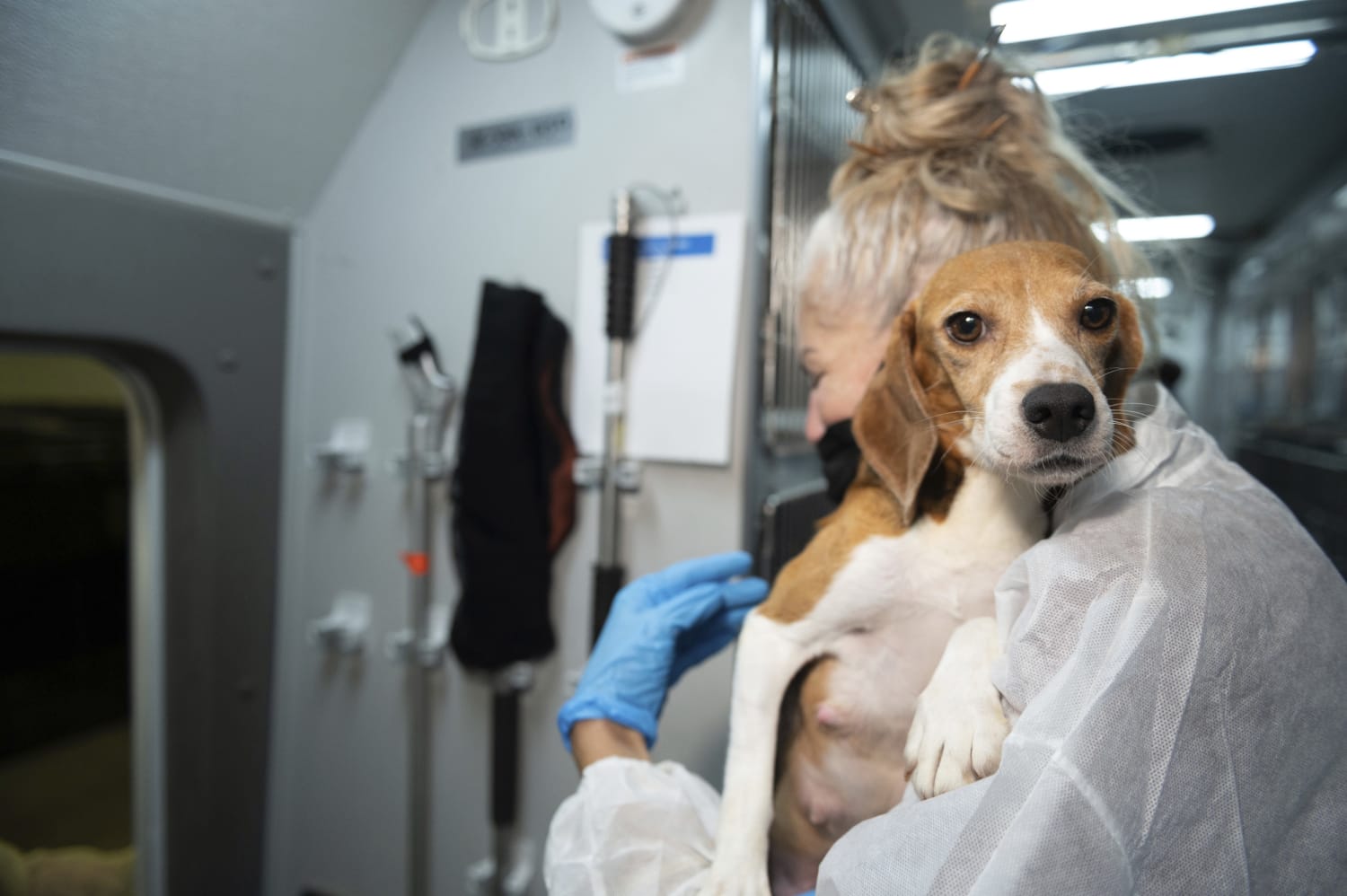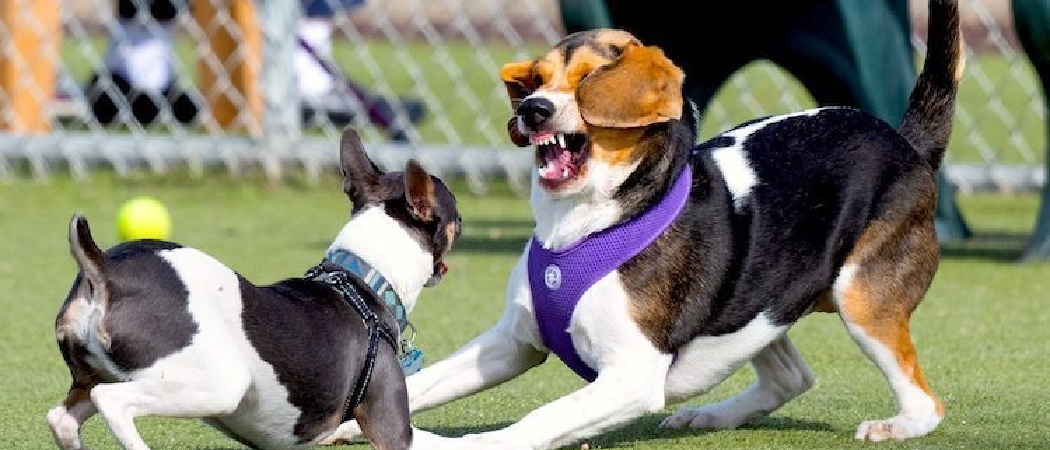To stop a dog from killing rabbits, you can train them to have good recall and use positive reinforcement. Rabbits can be irresistibly appealing to dogs, triggering their hunting instincts and leading to unfortunate incidents.

However, with consistent training and positive reinforcement, you can effectively prevent your dog from harming rabbits. The key is to teach them a strong recall command, such as “come” or “here,” and reward them generously for responding promptly. By associating positive experiences and rewards with the recall command, your dog will learn to associate rabbits with a redirection towards you rather than chasing or attacking them.
With patience and effort, you can ensure the safety of both your dog and the rabbits in your surroundings.

Credit: www.farmanddairy.com
Understanding The Behavior
When it comes to dogs killing rabbits, understanding the behavior is essential in order to prevent such incidents from occurring. Dogs are natural predators and their instincts can drive them to chase and even harm small animals like rabbits. By identifying the motivation behind your dog’s behavior and understanding prey drive, you can take appropriate measures to stop your dog from killing rabbits.
Identifying The Motivation
The first step in addressing this issue is to identify the motivation behind your dog’s behavior. There could be various reasons why your dog is targeting rabbits, such as:
- Instinct: Dogs have a natural prey drive, which is an instinctual desire to chase and capture small animals. This drive can be stronger in certain breeds, like terriers and hounds, that were specifically bred for hunting purposes.
- Playfulness: Some dogs may see chasing rabbits as a form of entertainment or a game. They don’t necessarily intend to harm the rabbits, but their high energy and excitement can lead to unintentional injuries.
- Boredom or Lack of Stimulation: Dogs that are bored or have limited mental and physical stimulation may resort to chasing rabbits as a way to alleviate their pent-up energy and alleviate their boredom.
By understanding the motivation behind your dog’s behavior, you can address the root cause and take appropriate steps to prevent them from targeting rabbits.
Understanding Prey Drive
Prey drive is a natural instinct seen in many dogs, and it refers to their motivation to pursue and capture prey. It is essential to understand this instinct in order to effectively train your dog to stop killing rabbits.
Here are some key points to consider when understanding prey drive:
| Key Points | Explanation |
|---|---|
| 1. Triggers | Identify the specific triggers that set off your dog’s prey drive. It could be the sight, sound, or movement of a rabbit that initiates their hunting instinct. |
| 2. Body Language | Observe your dog’s body language when they are in the presence of rabbits. Signs of prey drive may include erect ears, focused gaze, stiff posture, and an intense desire to chase. |
| 3. Redirecting Energy | Instead of trying to completely suppress your dog’s prey drive, redirect it towards more appropriate activities. Engaging them in stimulating games, obedience training, or providing interactive toys can help satisfy their instincts. |
| 4. Training and Socialization | Proper training and socialization are crucial in controlling your dog’s prey drive. Teaching them basic commands like “leave it” and “come” can help you gain better control over their behavior in rabbit-rich environments. |
Understanding your dog’s prey drive and implementing appropriate training techniques can go a long way in preventing them from harming rabbits and other small animals.

Credit: www.nbcnews.com
Training Techniques
Dogs have a natural prey drive, which can lead them to chase and even harm small animals such as rabbits. However, with the right training techniques, you can teach your dog to control this instinct and prevent them from harming rabbits. In this section, we will explore three effective training techniques: positive reinforcement, redirecting behavior, and desensitization.
Positive Reinforcement
Positive reinforcement is a powerful training technique that focuses on rewarding your dog for desired behaviors. When it comes to teaching your dog not to harm rabbits, positive reinforcement can help create a positive association between their behavior and a reward.
Here’s how you can use positive reinforcement to stop your dog from killing rabbits:
- Create a reward system: Choose a high-value reward, such as a tasty treat or a favorite toy, that your dog loves. Make sure the reward is something they only receive during training sessions.
- Train the “leave it” command: Start by teaching your dog the “leave it” command using a treat. Hold the treat in your closed hand and say “leave it.” When your dog stops trying to get the treat, reward them with praise and the treat from your other hand. Repeat this process until your dog consistently responds to the command.
- Practice with distractions: Once your dog understands the “leave it” command, gradually introduce distractions, such as toys or food that resemble rabbits. When your dog shows self-control by ignoring the distractions, reward them with praise and treats. Repeat this process in different environments to reinforce the behavior.
Redirecting Behavior
Redirecting your dog’s behavior can be an effective way to prevent them from chasing and harming rabbits. By teaching your dog an alternative behavior to replace their prey drive, you can redirect their attention and focus.
Follow these steps to redirect your dog’s behavior:
- Identify your dog’s triggers: Pay attention to the situations or stimuli that trigger your dog’s prey drive. It could be the sight or smell of rabbits or other small animals.
- Teach a positive alternative behavior: Choose an alternative behavior that is incompatible with chasing rabbits, such as sitting or lying down. Train your dog to perform this behavior on command using positive reinforcement. whenever they encounter a trigger.
- Practice in different scenarios: Gradually expose your dog to the triggers that used to provoke their prey drive. Whenever they display the alternative behavior, reward them with praise and treats. With consistent practice and positive reinforcement, your dog will learn to perform the alternative behavior instead of chasing rabbits.
Desensitization
Desensitization involves exposing your dog to rabbits or rabbit-scented items gradually. This technique aims to reduce the intensity of your dog’s natural prey drive by familiarizing them with rabbits in a controlled environment.
Here’s how you can use desensitization to prevent your dog from killing rabbits:
- Start with a gradual introduction: Begin by showing your dog pictures or videos of rabbits or letting them smell rabbit-scented items from a distance. Reward calm and relaxed behavior with treats and praise.
- Increase exposure gradually: Over time, slowly increase the exposure to rabbits or rabbit-scented items. This can include taking your dog for walks in areas where rabbits are present but keeping a safe distance.
- Monitor and reward progress: Pay close attention to your dog’s reaction during each exposure. If they remain calm and show no signs of aggression or excessive interest, reward them with treats and praise. If they become overly excited or agitated, redirect their attention to a command they have previously learned.
Remember, training takes time and consistency. Be patient with your dog and celebrate their progress along the way. With these training techniques, you can help your dog overcome their prey drive and peacefully coexist with rabbits.
Prevention And Management
Preventing your dog from killing rabbits requires a combination of proactive measures and careful monitoring. By implementing these strategies, you can ensure the safety of both your furry friend and the local rabbit population. In this section, we will discuss three key approaches to prevention and management: Secure Fencing and Enclosures, Supervision and Leash Control, and Distractions and Deterrents.
Secure Fencing And Enclosures
One of the most effective ways to prevent your dog from killing rabbits is by securing your property with proper fencing and enclosures. This creates a physical barrier that keeps your dog within the designated area, minimizing the chances of interactions with rabbits. Here are some tips to ensure a secure setup:
- Dig-proof the fence: Dogs can be excellent diggers, so it is essential to reinforce the base of the fence with chicken wire or bury it several inches below ground to prevent your dog from digging under the fence and escaping.
- Choose an appropriate fence height: Depending on the size and athleticism of your dog, select a fence height that they cannot jump over. High-quality fencing materials like chain-link or wood panels can discourage your dog from attempting to breach the fence.
- Install hardware cloth: For added security, attach hardware cloth to the bottom portion of the fencing. This small-gauge mesh prevents rabbits from squeezing through any gaps.
- Create a separate rabbit-proof enclosure: If you have a large yard or property, consider creating a separate enclosed area specifically for your rabbits. This ensures that your dog cannot access them, providing a safe space for both pets.
Supervision And Leash Control
Proper supervision and leash control are crucial when it comes to managing your dog’s interactions with rabbits. By keeping a close eye on your dog’s behavior and utilizing a leash when necessary, you can prevent any potential harm to the rabbits. Here are some tips:
- Monitor outdoor activities: Whenever your dog is outside, make sure you are present and closely observing their actions. This allows you to intervene immediately if your dog shows any signs of chasing or aggressive behavior towards rabbits.
- Keep your dog on a leash: When walking your dog in areas where rabbits may be present, keep them on a leash to maintain control. In case you encounter rabbits, you can prevent any negative interactions and ensure the safety of both your dog and the wildlife.
- Use a long-line leash for training: To gradually introduce your dog to rabbits in a controlled environment, a long-line leash can be helpful. This allows for distance control while allowing your dog to become familiar with the presence of rabbits without causing harm.
Distractions And Deterrents
Distracting your dog and using deterrents can redirect their attention away from hunting rabbits. These methods can help break the habit and provide alternative stimuli. Consider these approaches:
- Provide mental and physical exercise: Engaging your dog in daily exercise can help release pent-up energy and reduce hunting instincts. Incorporate activities that challenge your dog’s mind, such as puzzle toys or obedience training, to stimulate their mental well-being.
- Use positive reinforcement: Reward your dog for appropriate behavior when encountering rabbits. Offer treats or praise when they remain calm or show disinterest in chasing rabbits. This positive reinforcement can encourage your dog to override their instinctual response.
- Utilize deterrents: Certain deterrents can discourage your dog from approaching or chasing rabbits. Options include motion-activated sprinklers, ultrasonic devices, or natural scents that rabbits find unpleasant, such as vinegar or predator urine.
Implementing these strategies can significantly reduce the likelihood of your dog harming rabbits. By securing your property, supervising outdoor activities, and providing distractions, you can create a safe environment for both your dog and the local wildlife.

Credit: www.pinterest.com
Frequently Asked Questions On How To Stop Dog From Killing Rabbits
How Can I Stop My Dog From Killing Rabbits?
To prevent your dog from killing rabbits, ensure they are always leashed or kept in a securely fenced area. Training techniques such as recall commands, positive reinforcement, and distractions can also be helpful. Supervise outdoor activities, redirect their attention, and use deterrents like motion-activated sprinklers.
Seek professional help if needed.
Conclusion
To conclude, understanding the underlying reasons why your dog is hunting rabbits is crucial in addressing this behavior. By implementing consistent training techniques, such as positive reinforcement and redirecting their focus, you can encourage alternative behaviors and discourage chasing rabbits.
Remember, patience and consistency are key in modifying your dog’s natural instincts. With proper guidance and support, you can help your furry friend coexist peacefully with our small furry neighbors.


